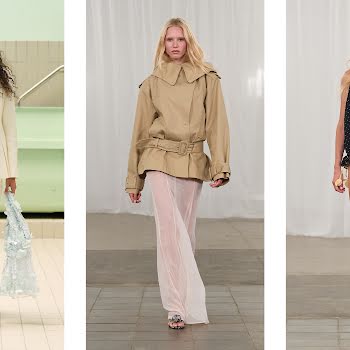
By Niamh ODonoghue
16th Aug 2018
16th Aug 2018
Fur is a product of the past. The future is synthetic and in line with consumer values, writes Niamh O’Donoghue
September is a pinnacle month for fashion publishers, brands and designers around the world. It signals the new season and with it comes the pressure to design, manufacture at a cheaper cost than ever and sell, sell, sell. But with continued pressure from animal rights groups, changing consumer needs and a rapidly increasing carbon footprint (the fashion industry is the second biggest contributor to global warming after the oil industry), fashion leaders are actually listening with a real intent to change.
The anti-fur trend tipped the scales in 2017, when major global fashion leaders took a stand against fur production, marking it as “old-fashioned”. Gucci announced its decision to cease production of fur – namely its popular fur mule – starting from its SS18 collection. During the same time, Yoox Net-a-Porter Group – Net-a-Porter, Mr Porter, The Outnet and Yoox – also declared that it would no longer sell fur products on its e-commerce sites. Versace quickly followed, pledging to stop fur production after Donatella Versace said that It didn’t feel right”. Next came Furla, then Michael Kors, Jimmy Choo, Columbia Sportswear and Donna Karan. Givenchy has also recently abandoned the use of real fur; signalling a domino effect within the industry.
ICYMI: Here’s where to shop ethically on the high-street
Fur production is also environmentally toxic: It takes at least four times more energy to produce one real fur coat than to produce a synthetic one, mostly due to animal feed and emissions of manure. This forward-thinking anti-fur movement is a reminder that in order to be successful in the fashion world, we don’t need to contribute to the barbaric treatment of animals or the destruction of the planet. The use of fur is increasingly out-of-touch with today’s buyer and is isolating the few remaining top-shelf designers who continue to create garments from fur.
The future of fashion is slow. That is, there will be a greater emphasis on buying fewer things less often, and on social and corporate responsibility. The effects can already be felt trickling down from industry leaders like Gucci and Versace to the high-street: in June Asos announced that it will ban the sale of all mohair, silk, cashmere and feathers in 2019, and a growing number of high-street labels are opting for safer production – both for the person producing the garment and the environment. Designers will continue to improve the production of faux fur, with more brands like British label Shrimps and American label House Of Fluff steadily filling the void that real fur once occupied.
ICYMI: Meet the woman who helped us fall in love with faux fur
Beyond faux fur, technological advances will soon allow brands to grow real fur in labs without having to breed or harm animals or suffer any environmental impacts. It’s been reported that designer Ingvar Helgason (formerly of the brand Ostwald Helgason) is developing BioFur, which would grow synthetic pelts the way that Modern Meadow has been able to produce lab-grown leather and Diamond Foundry creates lab-grown diamonds. And these advances are being made across other animal-based bi-products too: Piñatex, a synthetic leather made from pineapple leaf fibres, has been developed and is in production. “Eco-leather“, made with natural fibres layered together, creates a material that beautifully resembles leather.
Fur remains an iconic luxury item in certain cultures, particularly with Chinese consumers. But Irish – and indeed European – consumers are more woke than ever about what they buy and the production processes a product goes through. More than ever, shoppers are aligning their values and their wardrobes and it’s causing a ripple effect through the fashion industry.























